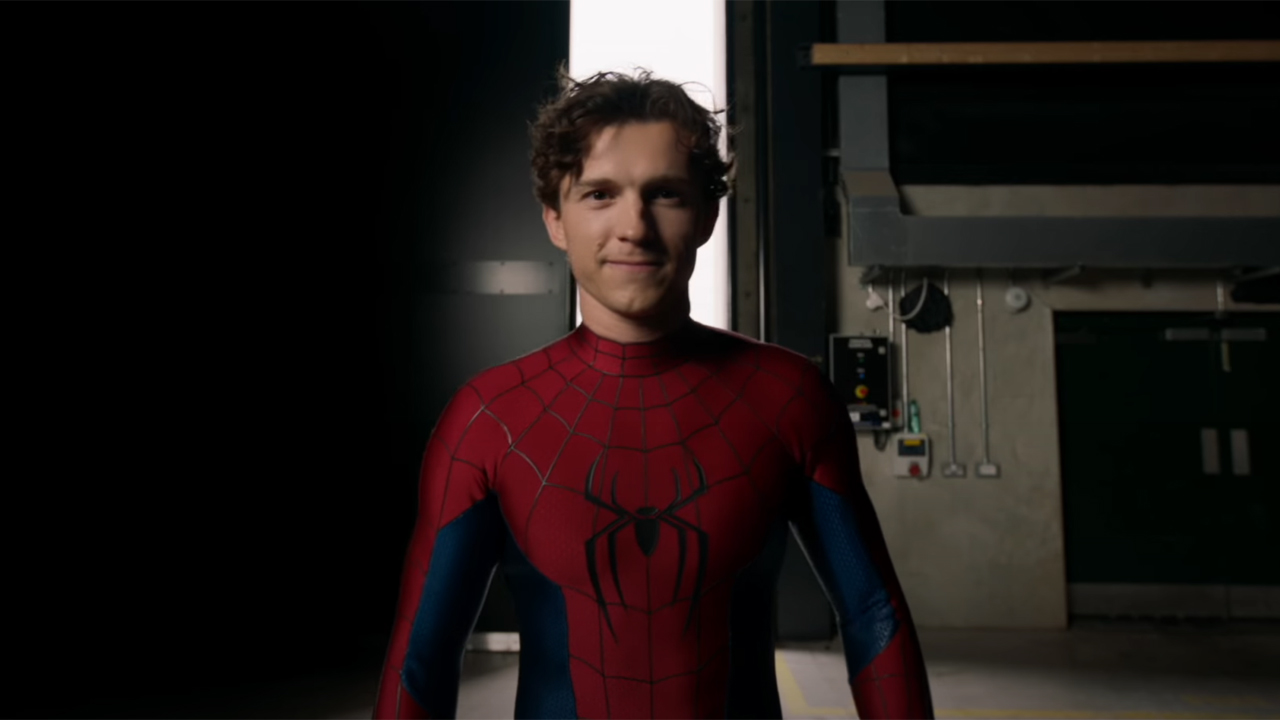Exclusive Interview: Tangled Directors Nathan Greno And Byron Howard
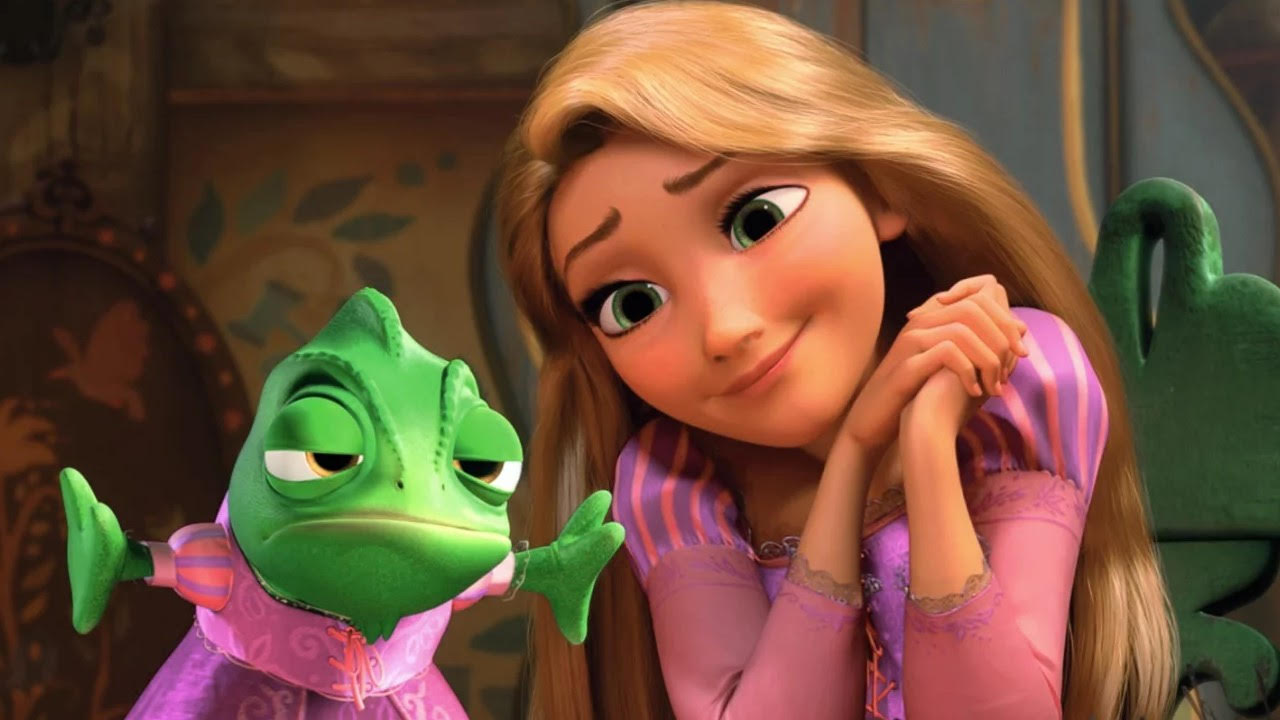
This Wednesday, Disney will officially release their fiftieth animated feature. It’s been a long 73 years since Snow White and the Seven Dwarfs premiered in 1937, and the long-standing company has put out some true classics since, from Cinderella to Aladdin, The Jungle Book to The Lion King. So when Nathan Greno and Byron Howard were hired as directors of the newest installment in the Disney princess legacy, it was just a touch daunting.
While at the junket for the film, held down in Disneyland, I was granted the awesome opportunity to sit down with the pair of directors one-on-one to discuss the film and all of its ins-and-outs, from the casting process down to what it’s like rendering 80 feet of hair (not easy). Check out my interview with the directors below.
One of the best aspects of the film was that it has this real, classic Disney feel. Was that something you guys aimed for when you were making the film?
Byron Howard: Yeah, definitely. Early on when we sat down and had our first meeting about the movie, Nathan and I are huge fans of classic Disney- we wanted the film to have this amazing look and nostalgia for those awesome films, like Pinocchio, Snow White, Sleeping Beauty, Peter Pan. So we tried to take design elements and the color pallets from those films, but at the same time we wanted to have that be hand in hand with this fresh, contemporary script, great contemporary characters you could relate to. We wanted Rapunzel to be a real girl, a real woman, who is going through something genuine. We wanted to marry all that and make this great combination.
In that same vein, was it intimidating to make a film that will forever stand alongside the Disney classics?
Nathan Greno: Yes, in a number of ways. To begin with, if you do these films correctly, you do them well, they really can live on forever. Animation has such power unlike anything else. So that was kind of a daunting idea that we were going to be doing that. You have to live up to the legacy of Disney and also this is Disney’s 50th animated feature – from the Walt Disney Company – so that in and of itself was like, “Whoa!” It was a ton of pressure. And then on top of all of that, working with John Lassetter, and he has the highest standards of anyone. We love it because we want to make a great film and so does he, but John, if everything is not as great as it can be, John doesn’t let things move forward. It was a lot of pressure.
BH: He gets so tough on his own stories and he wants us to be tough on our crew and the story. So when you do meet those expectations, and hopefully exceed them, then you feel really good about what you’ve produced. It’s great for us. We were locked away for two years working on these things with our crew of about 500, so when we get an audience in there and see “Oh yeah, that’s working fine,” it’s great to see that reaction.
Your Daily Blend of Entertainment News
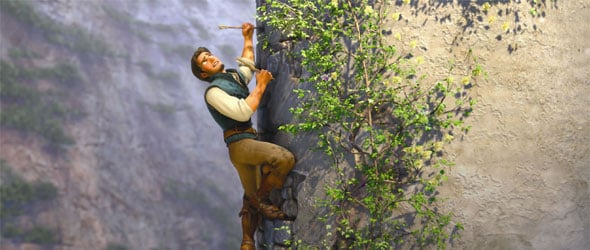
This movie was in development for a long time. When did the idea to make it 3D enter the picture?
NG: Well, Byron and I love a good challenge. The idea of creating this hair, 70 feet of hair in a CG film. When you go back and look at any other CG film, hair is usually in a bob or it’s short, because technically it’s a pain to do. Up until this point it’s been pretty impossible at times to have people interact with it at times. So when we were looking at how we were going to tell this story, 3D…I’m sorry, CG… were you asking about CG or 3D?
[Laughs] 3D, but I do want to know about the CG as well.
NG: It just dawned on me. [laughs] But CG, it looked like a way to at this movie, because we want to do something that’s so fresh and new and we really want audiences to say “How did this even happen? This is unlike anything I’ve ever seen before.” So that challenge of bringing that hair to life in CG was something that we were really interested in. I think it’s going to make people pretty surprised when people see it.
I heard you had to bring in hair experts in order to animate it.
BH: Oh yeah, definitely. When Glen [Keane] was doing drawing after drawing, we actually had a baseball cap with 70-foot long strands of string on it so that the animators could run around and see what that feels like. And we photographs…we had women who had never had their hair cut in 20-30 years come in and we looked at how it behaves once it gets past a certain length. What does that feel like? What’s the texture like? And, of course, we were just talking about this with one of the other guys, we had this brilliant team of technicians who were working on the hair for about six or seven years before the release of the film, and right up until the last minute we weren’t sure if we were going to be able to pull it off, because it was behaving so bizarrely. At one point it was looking like fabric, at one point it was looking like string, or synthetic nylon… it didn’t look like hair yet. All these layers that we had to add, like clumping and static electricity and now it just looks like natural, beautiful hair, but the effort behind it is mammoth.
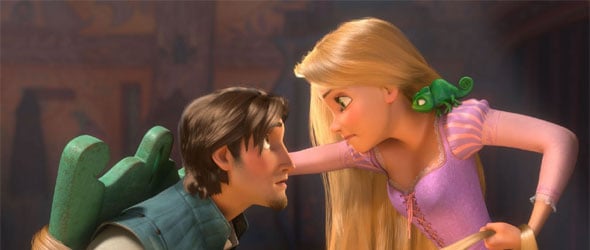
Was there a sigh of relief when the Rapunzel finally put her hair up in a braid?
NG: The braid was great because there is a point where you don’t want to think about the hair as a hindrance anymore and you just want to pay attention to her emotional journey and it was a great way to change her look mid-way through the movie. Even weaving that braid in CG was so hard. We had to ask the woman of the studio who actually knew how to do it, we had to watch it so carefully, model it – it was nuts.
Getting back to 3D, when did that enter the equation?
BH: For Nathan and I, we always though this movie would be CG and 3D, and one of the great parts… we’ve all been to movies where you go and say “Why did I pay that extra money to see that in 3D? That made no difference whatsoever.” But for this film, we make the movie work, first of all, in 2D, make it as strong story wise and visually [as possible]. With the 3D, Robert Newman, who supervised our 3D, takes no shortcuts. He’s a sticker for absolutely the highest quality 3D you can get. There’s no conversion at all, every frame is rendered left and right eye so you get the most immersive experience that you can. For sequences like that lantern sequence, where we have 50,000 of these lanterns floating in front of you, you’re floating with Rapunzel in that boat. It’s great. It was this moment she’s dreamt about for 18 years and now you’re in her mind.
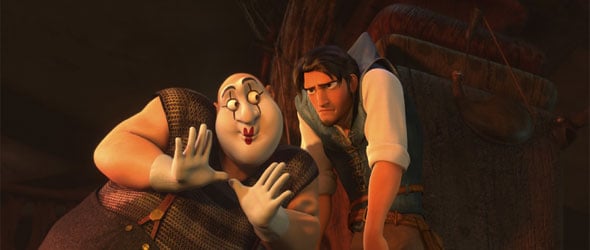
What do you think of the longevity of the medium? Do you think it’s here to stay and do you think it will eventually be broad spectrum?
BH: Well, it’s great to have a choice, they never forced us to use it. It is great as a story telling tool. I guess it seems like its awareness of how that’s affecting you’re story. You don’t just want to flip a switch and say everything gets the same treatment from shot to shot. That’s what’s great about Robert Newman, he makes choices individually for every single scene. There’s a different depth. If there’s an emotional scene he’ll squash it down and make it very subtle, and if it’s a big action scene he’ll really push the space so you feel like you’re immersed in it. The thing that’s nice that we’re seeing now is that the technology keeps evolving. I just read about a TV at home where you can sit there without the glasses and you have to be in the sweet-spot across the room, but kind of getting rid of the barriers between yourself and the screen seems like a good next step. And then people becoming more facile with it and using it as a cinematography tool, as a filmmaking tool, as opposed to just a novelty kind of thing for gags - I think that’s another step that’s going on.
There’s a tendency these days for animated films to simply stock their casts with as many super A-listers as they can, but with this movie it seems as though you made an effort to focus on getting real voice talent. Can you talk a little about that?
NG: Well, there are studios that it feels like they chase sort of big names, and without really thinking like, “Are these the best people for the movie?” It feels like they’re these publicity machines they are trying to create or something. For us it’s not the case. We worked so hard on crafting the story, so we start creating these characters and at some point you have to cast them. We met with such a large number of people, and we had a bunch of huge names that came in to read for these parts, and it was never about the big name. It was never about that at all. When we did land on the characters, it was always in service of the story. Story is king, story comes first, and that’s how we cast.

Eric Eisenberg is the Assistant Managing Editor at CinemaBlend. After graduating Boston University and earning a bachelor’s degree in journalism, he took a part-time job as a staff writer for CinemaBlend, and after six months was offered the opportunity to move to Los Angeles and take on a newly created West Coast Editor position. Over a decade later, he's continuing to advance his interests and expertise. In addition to conducting filmmaker interviews and contributing to the news and feature content of the site, Eric also oversees the Movie Reviews section, writes the the weekend box office report (published Sundays), and is the site's resident Stephen King expert. He has two King-related columns.
